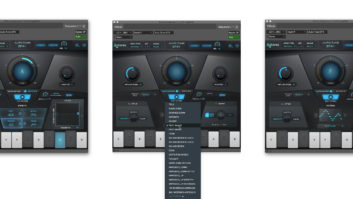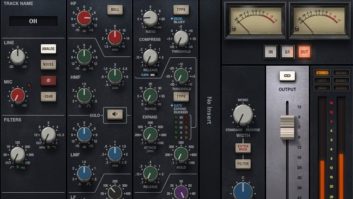Do your plug-ins have a good working relationship with your DAW? Sounds like a silly question, right? After all, plug-ins by their nature are third-party software designed to work inside, and communicate with, a host application. But as you probably know from your professional life, all working relationships aren’t the same.
Several DAWs, including PreSonus Studio One, Steinberg Cubase and Nuendo, Apple Logic Pro X, Cockos Reaper, and Cakewalk by Bandlab, have improved their ability to interact with specific plug-ins by including support for the ARA2 (Audio Random Access 2) protocol. Two other DAWs, Magix Samplitude and Waveform Tracktion, support the first version, ARA, and presumably will offer ARA2 relatively soon.
Initially developed by Celemony (makers of Melodyne) and PreSonus, ARA and now ARA2, allow expanded audio sharing and integration between compatible plug-ins and DAWs. (Check out this video for in-depth info on ARA). For example, in an ARA- or ARA2-compatible DAW, you don’t have to “Transfer” the audio into Melodyne in real-time, like you used to. You just open up Melodyne inside your DAW, and the audio for the track (or tracks) is already there, waiting to be edited.
Read more Mix Blog Studio: Audio—A Second-Class Citizen.
But it’s not only Melodyne. Synchro-Arts just announced that the latest versions of VocAlign and VocAlign Pro support ARA2. The company’s ReVoice Pro vocal processing plug-in has offered support for a while.
I am happy to see ARA/ARA2 catching on with various DAWs and additional plug-ins. It’s good for everyone that it hasn’t stayed exclusive to Melodyne and Studio One.
On the subject of communication between different software, several companies have developed proprietary technology that allows their plug-ins to talk to each other, with favorable results for your workflow. The folks at iZotope have been leading the way in this area with their Inter-Plugin Communication technology. Recent versions of flagship plug-ins like Ozone and Neutron can communicate with the company’s helper plug-ins like Relay, Tonal Balance Control and Visual Mixer.
For example, with instances of the low-CPU plug-in Relay inserted on the individual tracks, a single instance of Neutron 3 Advanced can control volume, panning and stereo width on all of them through the Visual Mixer feature.
You can also open iZotope’s Tonal Balance Control plug-in on your master bus and see and manipulate the EQ for any tracks that have Neutron 3 Advanced inserted on them. Tonal Balance Control shows you how your song’s EQ curve matches up to either several standard curves or custom ones you can create by having the plug-in analyze any recording.
What’s more, if you also have Ozone 8 Advanced instantiated on the master bus, you can call its EQ up from within Tonal Balance Control and make master EQ adjustments.
Although iZotope is leading the pack, it’s not the only company enabling communication between plug-ins. Another example is Celemony. Now you can edit multiple tracks with Melodyne on them from inside of a single one. If you’re working on tuning and editing background vocals, this can be a huge time-saver. Other companies are also developing or have already developed their own inter-plug-in communication.
Between ARA2 and plug-ins that communicate, software is clearly getting a lot more sophisticated, some might say “smarter.” And that’s without even getting into the subject of AI-infused applications and plug-ins, which is grist for a whole other column. The way things are going, DAW workflows of the future will almost certainly be significantly more efficient. Perhaps one day soon, all the various plug-ins in your DAW will be chatting away happily.







